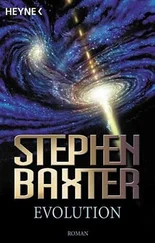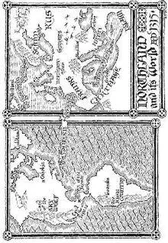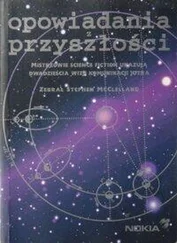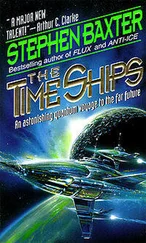These days, in fact, we no longer even think the parent star has to be like the sun to support a habitable world. Even red-dwarf stars, like Proxima Centauri, could conceivably have life-bearing planets. Such stars are small and dim, and the planet would have to huddle close to the central fire, probably so close that it would be “tidally locked” like our moon orbiting the Earth, with a single face perpetually presented to the star. You would think that the dark side, a place of eternal night, would be so cold that all the water, and even the air, would freeze out. But it’s believed that even a thin layer of atmosphere would transport enough heat around the planet to keep this ultimate chill-out at bay. From such a planet’s surface the sun would be huge—pink-white rather than red to the vision—and forever fixed in the sky, no sunrises or sunsets. The lack of tides, and the comparatively low-energy sunlight, would surely shape the origin and evolution of life. Perhaps plants would be characteristically black, to soak up all the energy available from the sunlight. It could be a dangerous environment, for stars like Proxima are prone to violent flares.
This may not sound like much fun. But remember that not so long ago people thought that to have life you had to have a sunlike star, with planets at an Earthlike distance. Since, as noted in Chapter 12, seventy per cent of the Galaxy’s stars are red dwarfs, with this model we have multiplied the potential number of habitable worlds in the Galaxy many times over. Not only that, the dwarfs have very long lives as stable stars, perhaps a hundred times as long as the sun’s. Suddenly the universe looks a lot more hospitable for life.
As it happens, the best candidate found so far of another Earth, the fourth planet of a star called Gliese 581, orbits a red dwarf. And as our nearest neighbour, Proxima, is a red dwarf, maybe it’s there we will find a “Pandora,” in reality, not orbiting the more glamorous Alpha A or B.
We may detect signs of life even before we manage to image habitable worlds directly. Spectroscopy, the analysis of the light reflected by a planet, or of starlight passing through a planet’s atmosphere during a transit across the face of its parent, can show evidence of the gases making up the planet’s atmosphere. Some gas giants have already been shown to have methane in their atmospheres. Direct spectroscopy may be possible in the next decade or so, through such missions as ESA’s infrared telescope Spica (to be launched possibly in 2017). Detecting such gases as oxygen in a world’s atmosphere would be a good indicator that life was present, even before we could see the green. This, in fact, in the Avatar universe, was how Pandora’s life was first detected.
The holy grail is to image an Earthlike world—to see its seas and polar caps and continents—as well as to detect the makeup of its atmosphere. This is the goal of future space missions including NASA’s proposed Terrestrial Planet Finder. And if such a world were discovered there would surely be pressure to develop and send a space probe. In the Avatar universe the first discovery of the Alpha Centauri planets prompted a rapid development of technology, leading ultimately to the sending of the first interstellar probes.
But could Polyphemus and Pandora exist? And if they do, given Alpha Centauri is the nearest star system, why haven’t we seen them yet?
Much of what we used to think we knew about Alpha Centauri has turned out to be wrong.
We used to think that in a multiple-star system like Alpha Centauri you might get close-in rocky worlds, but the formation of Jovian gas giants could be inhibited because of the closeness of the suns. After all, Alpha B is sitting at an orbit where Alpha A’s Jovians should have formed, and vice versa. But in October 2002 astronomers in Texas announced the discovery of a Jovian planet orbiting a star of the Gamma Cephei binary system, about forty-five light years from Earth, a system with twin stars with the same kind of spacing as the two suns of Alpha. The Jovian they found is about twice as massive as Jupiter, orbiting happily about twice as far as Earth is from the sun.
Then we used to think that even if multiple star systems like Alpha Centauri grew planets the stars’ gravitational perturbations would destabilise their orbits and throw them out of the system altogether. But recent studies have shown that for planets as close to Alpha A as Earth is to the sun, B’s gravity would have no significant effect on their orbital stability. So Alpha Centauri may not just have twin stars. It may host twin solar systems: two planetary systems just a few light-hours apart, so close that if humans had evolved there we might already have made interstellar journeys.
And we used to think that we would never find a giant planet like Polyphemus so close to its star, as close as Earth is to the sun. When we only had the example of our solar system to study, we believed that gas giants would only be found far from the parent star, beyond the “snow line,” where, out in the stillness and cold and dark, the worlds grow immense, misty, stuffed with light elements like hydrogen and helium that were boiled out of worlds like Earth that formed close to their sun’s heat. Thus in our solar system the closest-in Jovian, Jupiter itself, is five times as far as Earth is from the sun. But as we’ve studied the new exoplanets we’ve found endless examples of gas giants orbiting much closer to their suns than was thought possible. Indeed, as I noted earlier, it’s the very closeness of these huge worlds to their suns that allow us to detect them in the first place.
It seems a Jovian may well be born out beyond the snow line, but then it can suffer a kind of friction with the sun-surrounding disc of dust and gas from which it formed, causing it to lose orbital energy and spiral inwards. Several such planets may be eaten by their sun until at last the growing sun’s radiation and solar wind, or perhaps a blast from a nearby supernova, clears away the last of the debris, leaving the survivors to settle where they are. In our system, perhaps Jupiter and the other three giants are the last survivors of a flock of gassy worlds, most of which were consumed by the young sun.
In other systems we’ve seen “hot Jupiters,” left stranded in stable orbits much closer to their suns than Jupiter is to the sun. The most extreme example found so far, reported in 2010, is a planet of a star called WASP-12, nearly nine hundred light years from Earth. While Jupiter takes around twelve years to orbit the sun, this wretched world orbits in a mere day. The star’s gravity will have pulled it into an egg-shape, its surface temperature must be thousands of degrees, and the star’s heat, boiling away its atmosphere, will some day ensure its break-up altogether.
Even without being a hot Jupiter, being close in would make a difference to a gas giant’s formation, to its weather, and ultimate fate. And indeed Polyphemus has a different composition to Saturn—it is smaller and denser—and it is lot more stormy, with a “great red spot” storm larger than the red spot on Jupiter.
So it’s entirely possible that a Jovian like Polyphemus could indeed be found at an Earthlike distance from Alpha Centauri A, with a nice spherical moon like Pandora. But even if we found Polyphemus using exoplanet-tracking techniques, would we be able to see Pandora? Maybe. One recent computer simulation, of an Earth-sized “exomoon” orbiting a Neptune-sized giant, showed that the moon’s orbit would affect the giant’s path sufficiently for it to be detected by a “transit” observation by a future space telescope.
In reality we haven’t yet detected a Polyphemus orbiting Alpha Centauri, or indeed any worlds in that system, despite its closeness. In the Avatar universe the explanation is simple. The plane of the planets is tipped at sixty degrees to our own; our current detection methods, the transits and Doppler tracking, work best when the planets’ orbits are in our line of sight. There are other factors too, such as the comparative instability of planetary orbits within the system. This could well be the case. Planet-hunting is still a tentative game. But we are planning more subtle exoplanet searches, with powerful spaceborne instruments. I think we can be confident that if Poly-phemus and Pandora, or anything like them, do exist, some day we will see them.
Читать дальше










